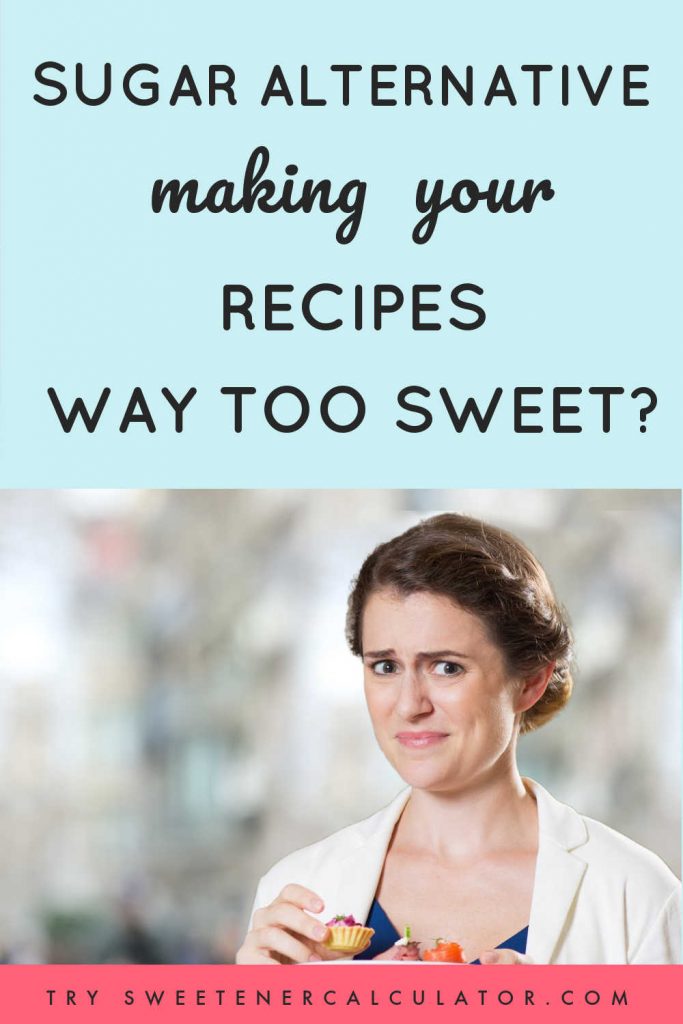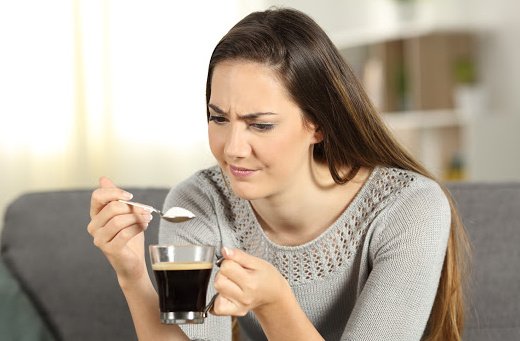Do you wonder how to convert sweeteners so that your drinks and recipes don’t turn out way too sweet or not sweet enough? To help you out, I created a Sweetener Calculator that converts between 1000s of sugars, syrups, and sweeteners. Use the result as a guide and adjust to taste with my 6 easy tips.
Does this sound like you?
You have been researching sweeteners for a few months now, trying different ones to see how they cook, bake, and how your body reacts.
After experimenting with them, your biggest frustration is that some recipes end up way too sweet, even though you used the amount recommended on the label.
Why do they call for so much sweetener?
Confused and overwhelmed by all the sweeteners in stores?
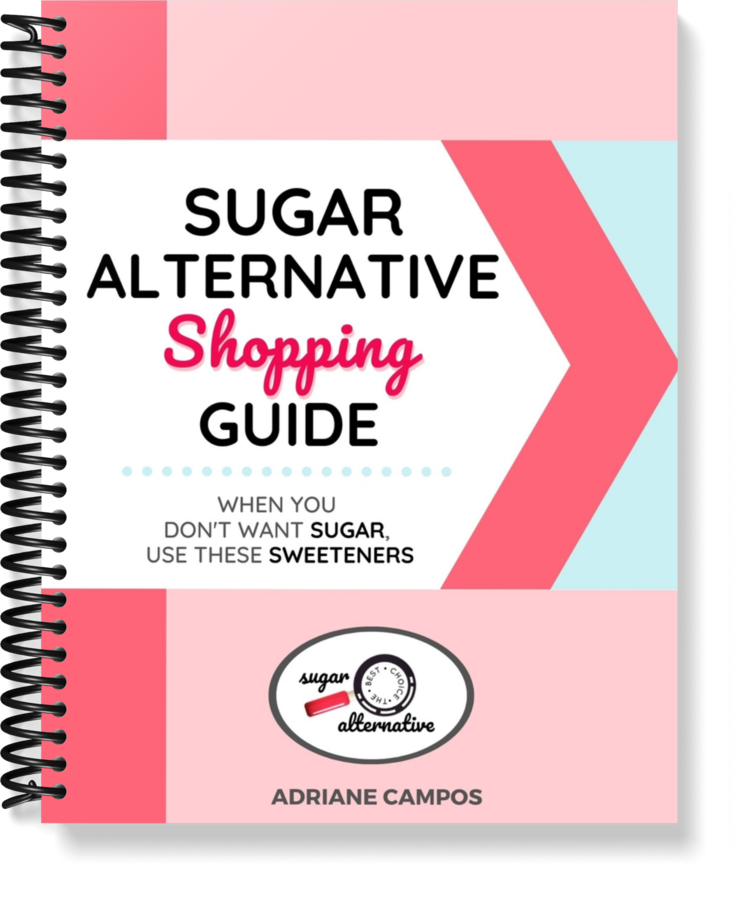 With 1000s of products sold in stores, our Sugar Alternative Shopping Guide will help you make sense of ALL the different options. It’s a goldmine—get it free for a limited time!
With 1000s of products sold in stores, our Sugar Alternative Shopping Guide will help you make sense of ALL the different options. It’s a goldmine—get it free for a limited time!
I am with you in not liking overly sweet, but sometimes I also find that some sweeteners just aren’t sweet. In this post, you’ll see why that is. I’ll tell you how to find the right amount of sweetener that will resonate with your palate.
Why is my food too sweet or not sweet enough?
Here is what is important to understand. The sweetness is an essential attribute of a sweetener that does not change. However, the perceived sweetness varies. Sometimes you’ll feel a sweetener makes your recipes or drinks too sweet or not sweet enough because of the following:
1. Where are you using the sweetener?
The sweetness level of each sweetener is affected by the food’s temperature, pH level, texture, and interaction with other ingredients. Imagine having a sweetener simply dissolved in water (at room temperature) versus it in iced tea, hot coffee, lemonade, yogurt, cereal, or fruit. The same concentration of sweetener is going to taste different in each case. You might think, “it just isn’t sweet” in one case, but “it tastes too sweet” in another.
For example, a glass of citrus fruit juice from lemons or oranges needs more sweetener than an apple or mango juice.
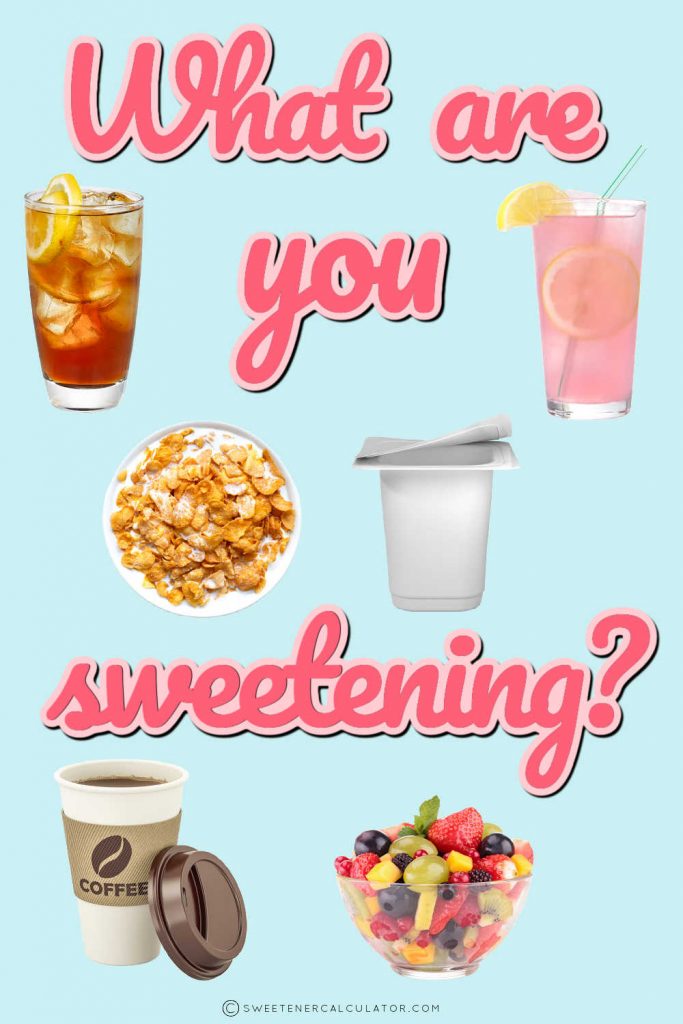
Want to know what else affects the sweetness level?
2. How much sweetener are you using?
The amount of sweetener you use — 2 teaspoons versus 2 tablespoons— also affects the sweetness level. To explain what I mean, let’s take pure sucralose, the well-known artificial sweetener used as an ingredient in Splenda yellow packets. For the sake of simplicity, let’s imagine we are tasting sucralose dissolved in a cup of water with lemon juice (pH 3) and comparing it with table sugar.
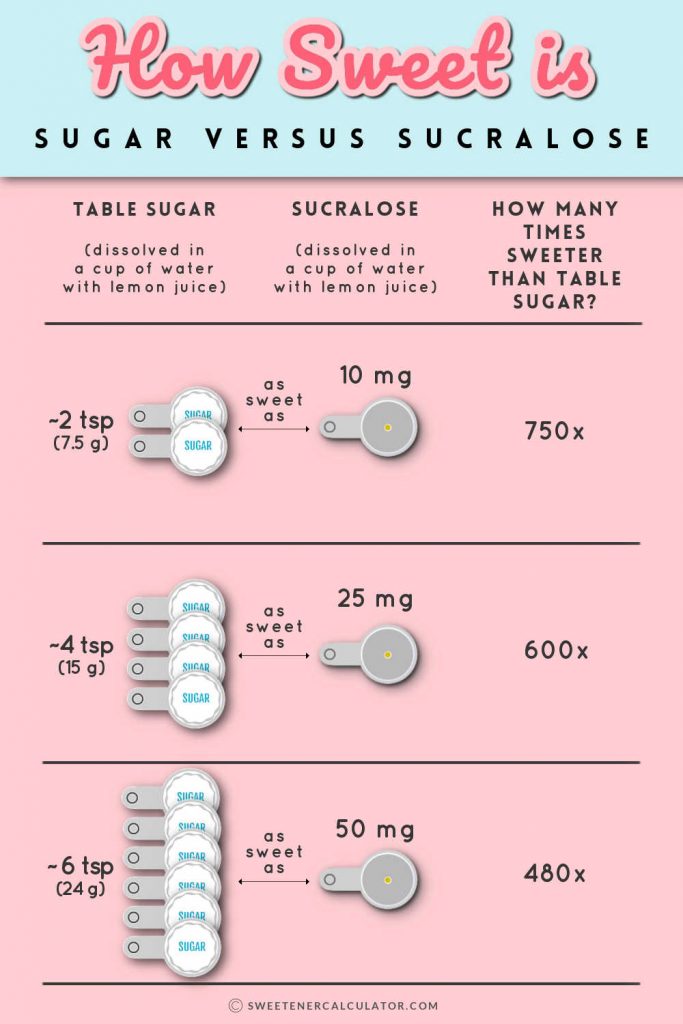
The chart above shows that sucralose’s sweetness is extremely intense — from 750 to 480 times sweeter than table sugar. Even though sucralose is widely promoted as being 600x sweeter than sugar, the chart indicates the sweetness level (relative to sugar) varies with the amount you use.
You can see that you need 10 milligrams (mg) of sucralose to substitute two teaspoons of sugar. If you had to calculate how much to substitute for six teaspoons (= two tablespoons) of sugar, you’d say 30 mg or 3×10 mg of sucralose. By replacing six teaspoons for 30 mg of sucralose, you’d think the taste is not sweet enough. Your calculation would not give you the right sweetness level because you actually need 50 mg — as the chart shows.
So, as opposed to what you might think, the more sucralose you use, the smaller the sweetness (compared to table sugar) gets — from 750x to 480x. And this sweetness reduction (relative to table sugar) happens with all high-intensity sweeteners, including stevia and monk fruit.
You know what else affects the sweetness level?
3. How sweet do you like your food?
You hear your friend talking about this one sweetener she loves, and her recommendation to you is to use less because it’s really sweet. But when you try it, you couldn’t taste any sweetness at all! What gives?
We all have our personal preferences for sweetness level. Some people like their food really sweet and some don’t like it sweet at all. The sweet taste is not only subjective but also influenced by genetic and anatomical variations.
Different people experience sweeteners differently depending on factors particular to each of us, such as:
• age
• sex
• health
• education level
• income
• food preferences
• consumption habits
• the environment or context in which we eat the sweetener.
We also have differences in our taste buds and saliva.
All that to say, the optimum sweetness level that satisfies MY taste might not be the same FOR YOU at all.
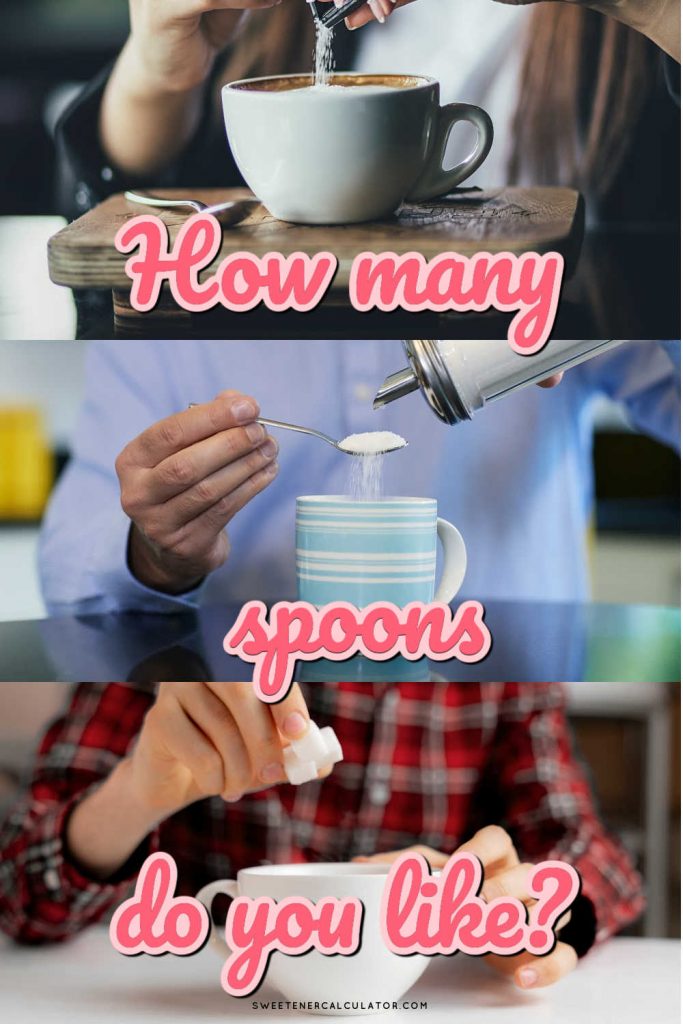
The bottom line: The sweetness is affected by so many things. You have to accept that the amount recommended on the sweetener label might need to be adjusted depending on your personal preference and how you are using it. So, where should you start?
The solution: Use my Sweetener Calculator as a Guide
I heard from so many people that their biggest frustration when using sugar alternatives was converting them.
They felt that every recipe they liked used a different sweetener than the ones they had on hand! And when that’s the case, the conversion charts aren’t so helpful, because they are always based on just one sweetener as the reference — table sugar.
So, I went on a quest to figure out how I was going to help them.
I knew all these complaints were coming from people like you—regular home cooks that had been experimenting with different sweeteners in baking and cooking for a while. They didn’t need any help finding recipes. They mainly struggle with measurements — and a few other things that I’ll tell you on my blog.
To begin answering these questions, I embarked on a thorough process of going down the sweetener rabbit hole. I gathered information from different sweetener websites. I deconstructed the front and back of sweetener packages (ingredients, nutrition facts, label claims). I contacted manufacturers and sellers to find all the details about their products. Based on this exhaustive research process, I created a calculator to help you substitute sweeteners in your drinks, baking, and cooking.
What does the sweetener calculator do?
The Sweetener Calculator tells you the amount of sweeteners with equivalent sweetness.
It’s an easy way to convert one sweetener to another. Enter the amount of one sweetener (teaspoon, tablespoons, cups, grams, drops, squeezes, milliliters), and it will give you how much of another has the same sweetness level. Click on the link below to start converting now.
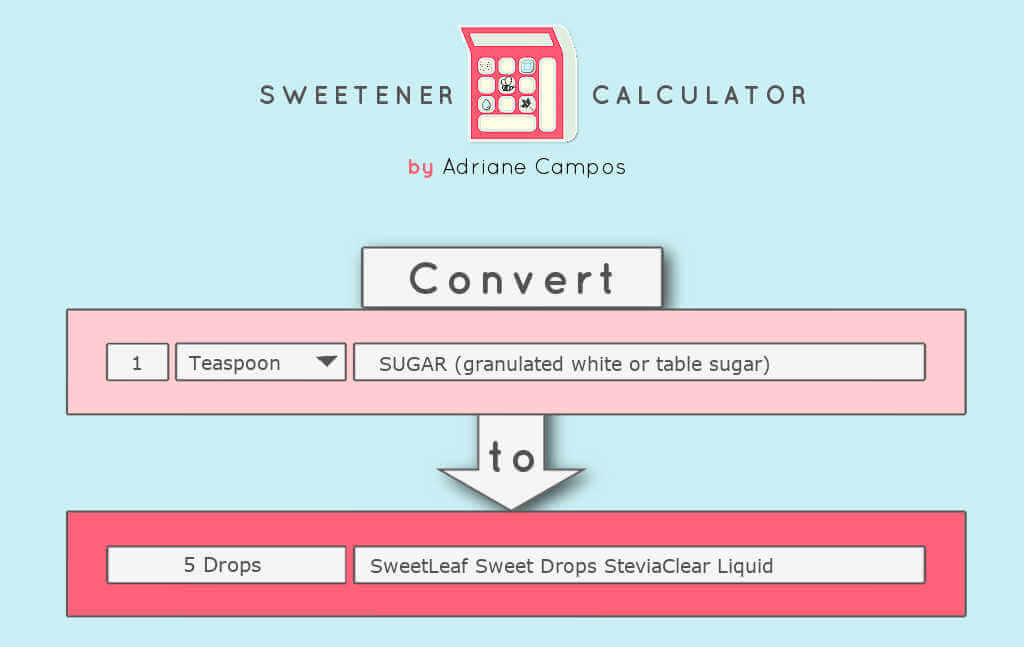
It is important to know that the Sweetener Calculator’s result doesn’t consider factors particular to each of us, described before. It also doesn’t account for where/how you’re using the sweetener.
So, use my Sweetener Calculator as a guide. It was created based on the amount recommended by sweetener manufacturers and sellers, which is typically displayed on the product’s label.
6 Simple Tips to Convert Sweeteners The Right Way
When you replace sugar with sweeteners in recipes, you’ll need some tips and tricks to avoid an overwhelmingly sweet or “not sweet enough” ending result. I thought this post could be an excellent place for all of us to share how we have fixed that. I’ll go first with the following six simple tips:
TIP #1. Substituting sweeteners for sugar in your recipes?
Use the amount you get from the Sweetener Calculator as a starter point. Be aware you might need to add slightly more or less until you reach YOUR optimum sweetness level.
Let’s take erythritol as an example. From the Calculator, you’ll find that one teaspoon (tsp) of sugar is equivalent in sweetness to 1 1/3 tsp of erythritol. For those that don’t like things super sweet, this amount will work fine. But maybe for you, 1 1/3 tsp of erythritol (the Calculator’s result) is not sweet enough. Next time, you’d add 1 1/2 tsp and so on until you reach an amount that resonates with your palate.
TIP #2. Subbing sweeteners in baking?
The most difficult recipes to substitute sugar are baked goods, such as cookies, cakes, brownies, and muffins. It’s because, besides sweetness, sugar contributes texture, moisture, color, and aroma.
One of the main issues with sugar alternatives is that they tend to taste sweeter in those recipes.
So, when it comes to baking, a good rule of thumb is to start by using less sweetener rather than more than the result you get from the Calculator. You’ll need to test recipes with different ratios to see how much sweetener you prefer. But typically, you can reduce 1/4 of the amount of sugar alternatives called for in the recipe, without negatively affecting your baked goods’ texture and appearance.
Always take notes.
You might want to start with half and adjust the sweetness level from there. For example, if the recipe calls for 2 cups of sweetener, use 1 cup and add more if it isn’t sweet enough. You can always add more, but you can’t take it out.
TIP #3. Subbing confectioners or powdered sugar in icing and frosting?
If you’re are making a sugar-free frosting, start with much less powdered sugar replacement rather than more than the result you get from the Sweetener Calculator. Frosting tends to showcase sweeteners’ off-flavors easily, such as the cooling effect, bitter, and mettalic tastes. If the Calculator tells you to use 1 cup of the powdered sugar replacement, add 1/4 cup. You can always add more if it isn’t sweet enough.
TIP #4. Are your baking goods not coming out sweet enough, no matter what recipe you try?
For a simple solution to supplement sweetness in your recipes, you can add a pinch or a few drops of super concentrated sweeteners, such as:
• Stevia pure extracts
• Stevia liquid
• Monk fruit pure extracts
• Monk fruit liquid
• Liquid natural zero-calorie sweetener
• Liquid artificial zero-calorie sweetener
Click the links below to explore your options. After choosing a product, use the Sweetener Calculator to find out the right amount to use.
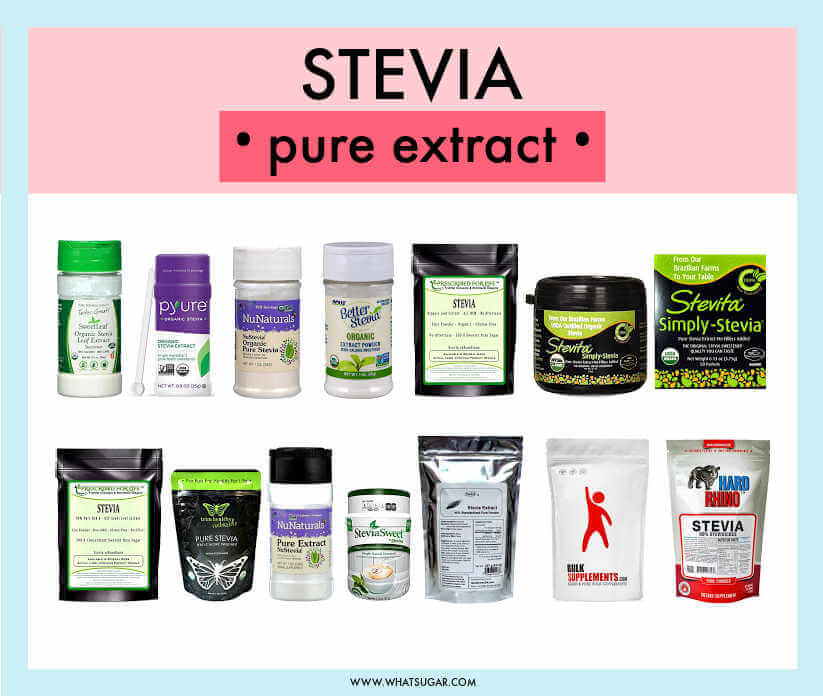
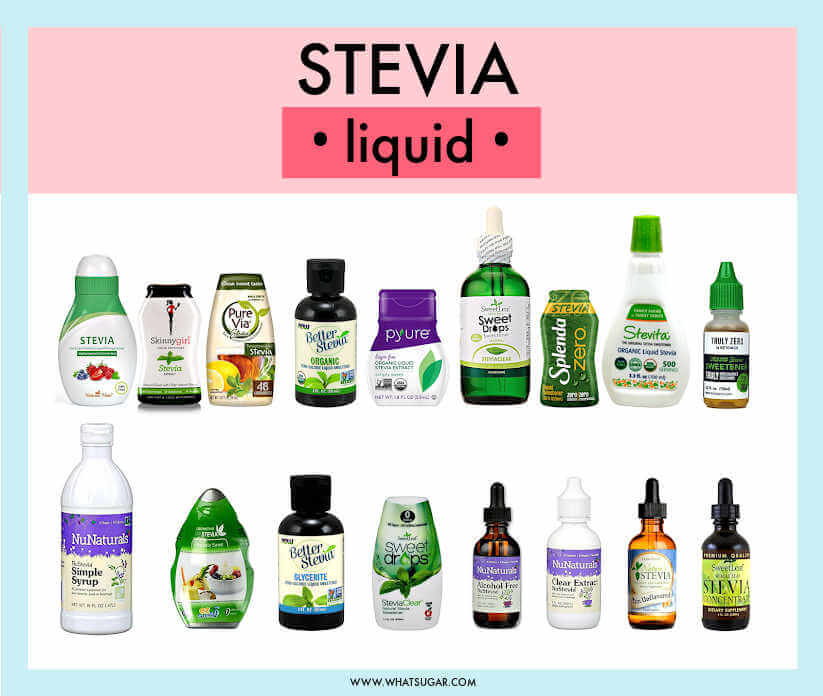
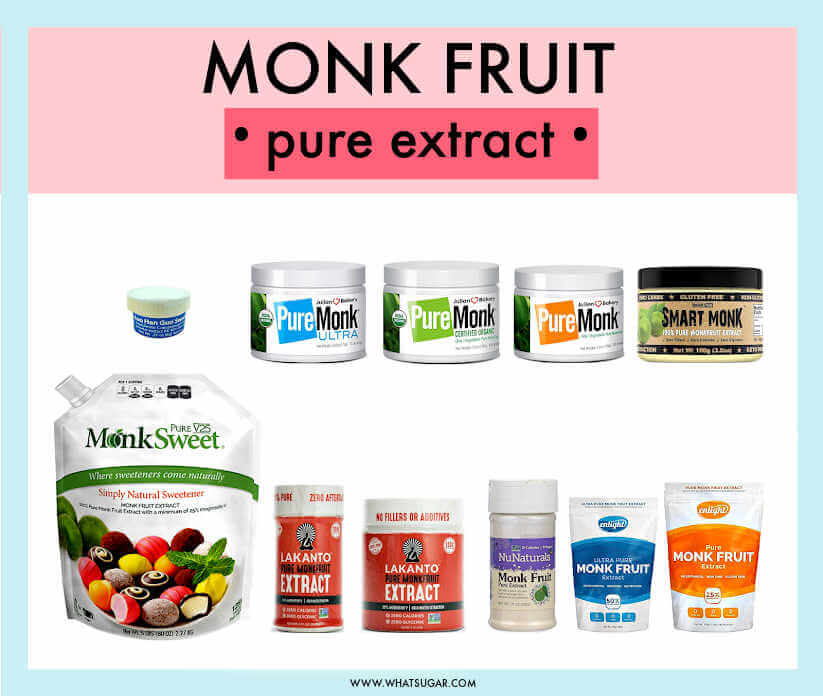
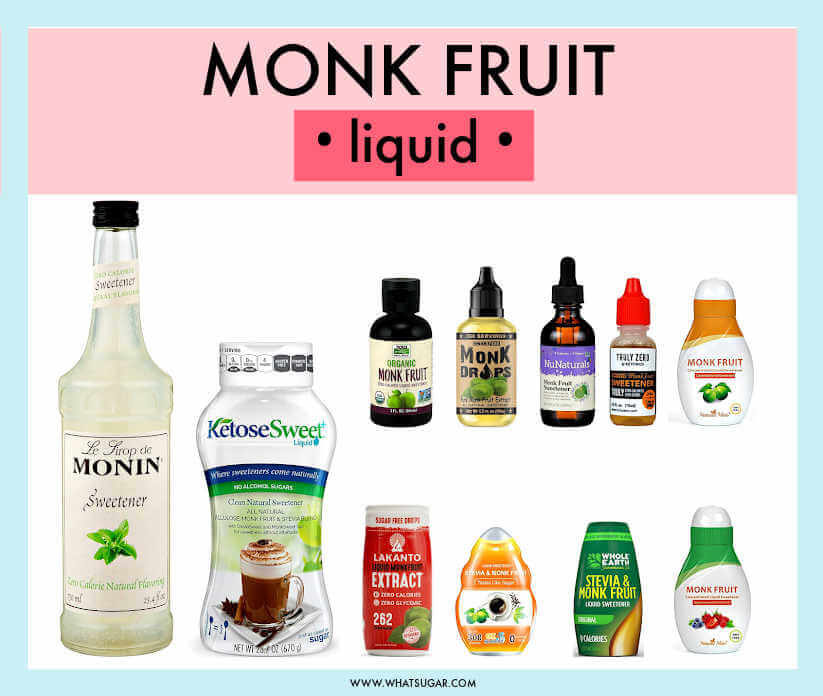
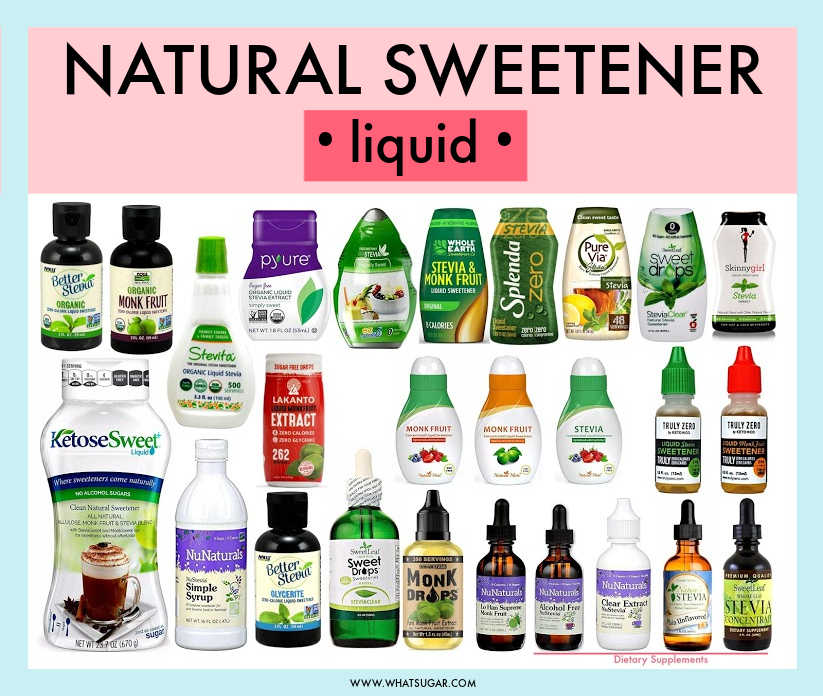
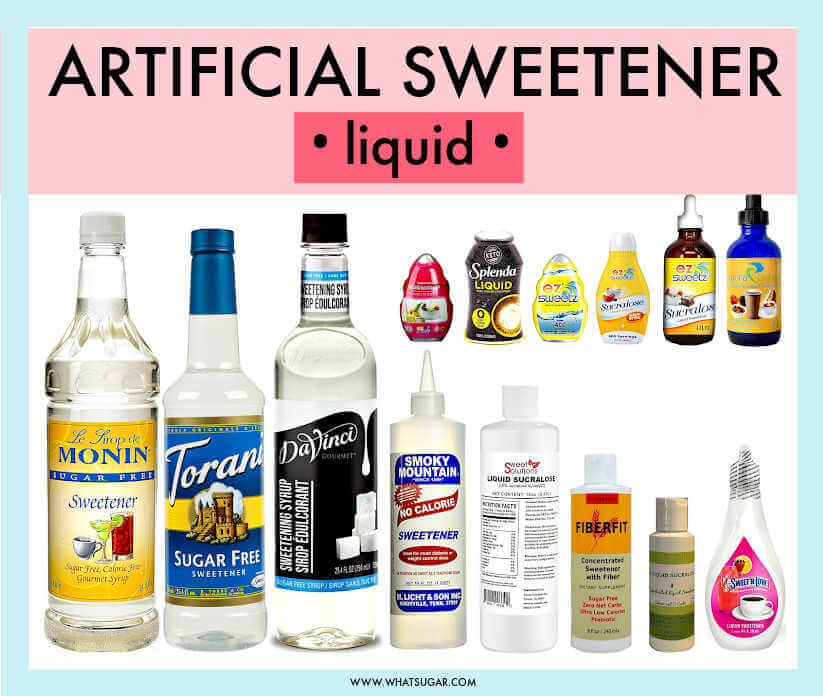
TIP #5. Any idea of what to do when baking goods don’t taste sweet enough?
Obviously, next time you could add more sweetener. But to avoid throwing away that whole batch you already baked, you can enhance the sweetness by serving it with whipped cream or ice cream. Sprinkle with powdered sugar or a zero-calorie powdered sugar replacement. Or let me send you my address 😉
TIP #6. Your recipe turned out to be too sweet. Any way to “de-sweet” it?
To avoid wasting your overly sweet baked goods, try to balance the sweetness with acidic (bitter or sour) ingredients such as dark chocolate, cocoa powder, and berries. You can also serve it with plain yogurt or unsweetened whipped cream. Or I’ll come by and take them off your hands… 🙂
Your turn now!
Have you found your recipes come out too sweet or not sweet enough? How did you fix it?
Share your tips in the Comments below.
Summary
When you are swapping sugar alternatives, sometimes sweeteners just aren’t sweet; others taste wayyyy too sweet. The thing is the sweetness level varies depending on “what you are sweetening”, “how much sweetener you are using”, and “how many spoons you like.”
It’s HARD! But I have a solution.
To recap, you can find the right amount to use by following this:
1) Use my Sweetener Calculator to get the amount to substitute—that’s the amount recommended by the manufacturer.
2) The result you get should be used as a guide, but you’ll need to adjust depending on where and what you are sweetening.
3) To avoid an overwhelmingly sweet or “not sweet enough” ending result, read my 6 tips to get the sweetness level right.
Conclusion
If you’re not particularly good at math or your head hurts when you have to calculate how much sweetener to replace in a recipe, you need my Sweetener Calculator. To avoid foods that just aren’t sweet or taste way too sweet, use the amount calculated as a guide. Fine tune it by adding more or less according to my “6 Tips to Convert Sweeteners Right.”
How about you? Any ideas to “de-sweet” or “up-sweet” baked goods that don’t come out right?
